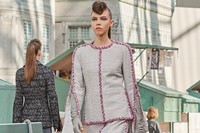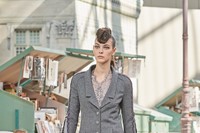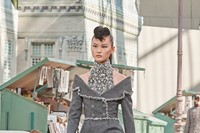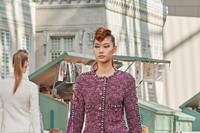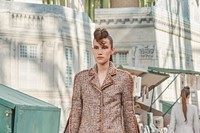To describe Karl Lagerfeld as well read would be an understatement. He is a man who famously buys books in triplicate, and resides in apartments lined floor-to-ceiling with books stacked horizontally (the better to fit more in). So his dedication of the Autumn/Winter 2018 Chanel Haute Couture collection to the literary life of Paris was second nature. Paris is the city in which Lagerfeld has chosen to live and work throughout his long and grand career, and its position as a place that has given birth to legions of fêted writers and been a safe haven to more from across the globe is unprecedented. This, then, was a collection that came straight from the heart.
The set was a frontispiece for the chapters to unfold: inside the Grand Palais, the banks of the Seine were recreated, with the Institut de France – home of the Académie Française – hunched behind a low stone wall punctuated with the Tuilerie-green book stalls of the Paris bouquinistes that first appeared in the French capital in the 19th century. Only here, they were manned by couturier Karl Lagerfeld’s inner circle, dressed as Beatnik intellectuals in knit caps and sweatshirts that read ‘Institut Chanel’.
Chanel itself is of course an institution, as storied and acclaimed as the Académie. And both have uniforms, which were equally present here, frequently in conversation. The Chanel suit was the backbone. Here it was interpreted as a slender silhouette Lagerfeld described as ‘high profile’: skirts unzipped to the thigh, fabric unfurling like pages to reveal miniature versions beneath, because “legs are more beautiful when seen from the side,” Lagerfeld said. Sleeves were slashed to the elbow over long leather fingerless gloves – all the better to leaf through your livres. Zips were edged with the famous Chanel braiding: the perfect fusion of the handmade and the industrial; of man and machine. “I’m very happy, after all these years, to have found a new way to use it,” Lagerfeld said, of that passementerie signature.
“With her 50s quiff and fold-down ankle booties she was at once Rockabilly and refined, bookish and provocative, boy and girl” – Susannah Frankel
There was a degree of nostalgia to this view of la Parisienne – in the more cosmopolitan iteration of the word, meaning at once irreverent and urbane. This was certainly not a woman averse to more than her share of fun. Instead, with her 50s quiff and fold-down ankle booties (street-inspired but far from of-the-street, encrusted with jewels to match the clothes) she was at once Rockabilly and refined, bookish and provocative, boy and girl.
Embroideries this time – and there are none finer than those at Chanel – were abstract. Lozenges of crystal whispered of the cobbled streets of Paris but, confined principally to the upper part of the body, “are there to shine light on the face,” commented Lagerfeld. Equally reflective – imagine moonlight on water – was plaited thermal foil, the most functional of materials, mixed with inky black velvet with feathered borders: the haute and the humble effortlessly conjoined.
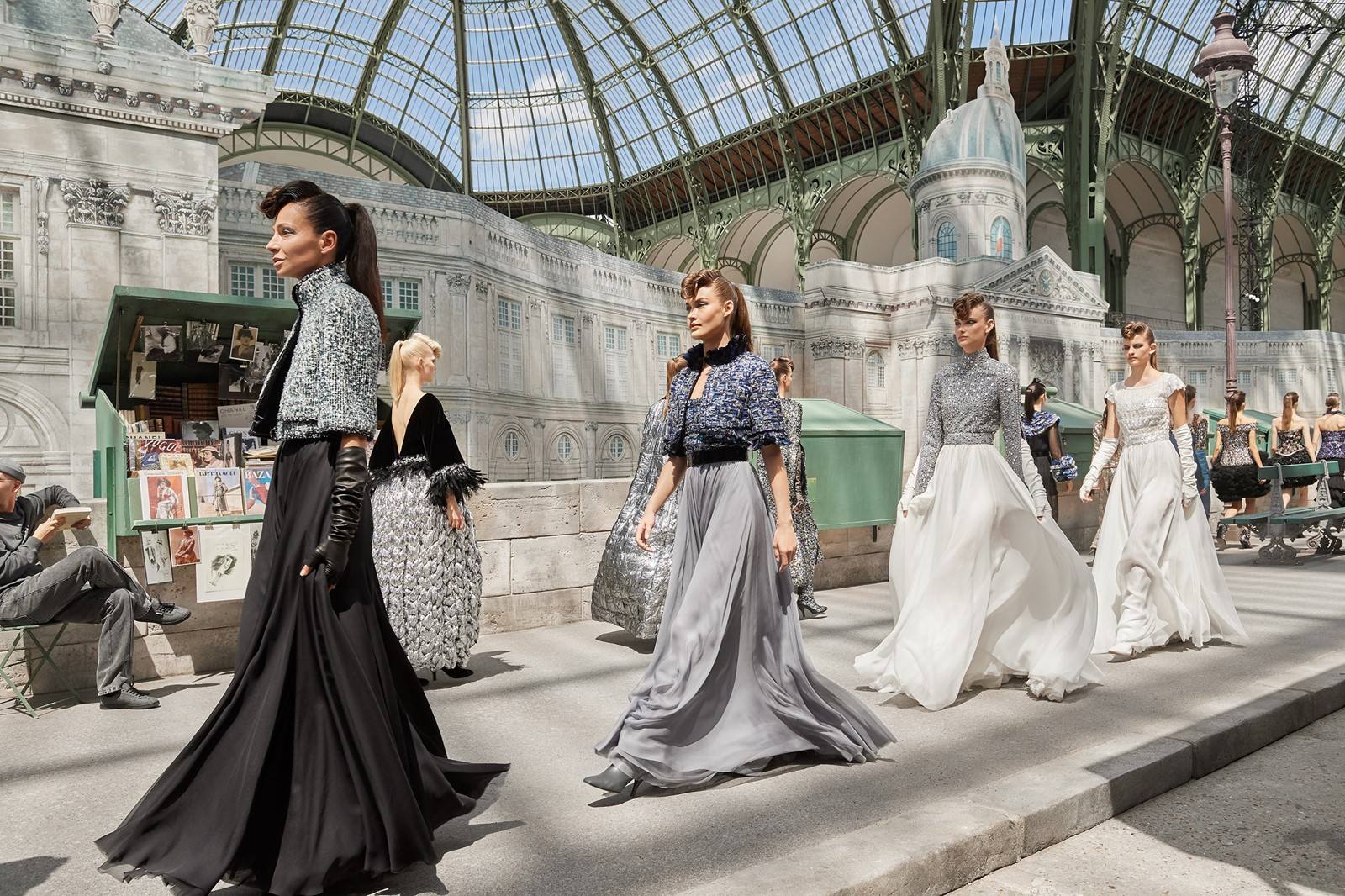
As for the bride who traditionally closes the haute couture presentation: she walked in a skirt and jacket in the delicate pale green the rooftops of Paris are famous for. It’s somewhere between pistachio and verdigris. In this instance both the colour and surface embellishment referenced that other aforementioned French uniform, of the esteemed academicians of the Académie Française. In the hands of the masterful craftspeople employed and long sustained and supported by the house of Chanel they were the most lovely liveries in the world.

